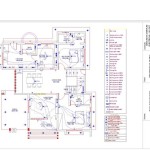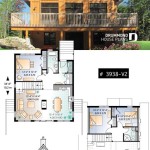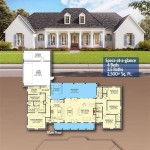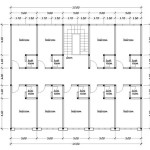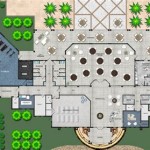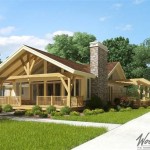Vanna Venturi House Plan: A Deconstructivist Icon
The Vanna Venturi House, designed by Robert Venturi for his mother, Vanna, stands as a seminal work in postmodern architecture. Completed in 1964 in Chestnut Hill, Pennsylvania, the house challenged the prevailing orthodoxy of modernist architecture, becoming a manifesto for Venturi's theories articulated in his influential book, "Complexity and Contradiction in Architecture."
The house's plan reflects a deliberate departure from the functionalist principles of modernism, embracing complexity, ambiguity, and historical references. Unlike the open plans favored by modernists, the Vanna Venturi House utilizes a more traditional, almost fragmented floor plan. While relatively small, the layout is carefully organized to create a rich spatial experience that defies simple categorization.
The main entrance, marked by a prominent, segmented arch, leads into a compressed entry hall. This narrow space then expands into the living room, which forms the core of the house. The living room features a monumental fireplace and a large, multi-paned window facing the front facade. The exaggerated chimney, visible from both the interior and exterior, dominates the composition, acting as a central organizing element.
Adjacent to the living room is the dining area, slightly elevated and separated by a low wall. This partial separation defines the spaces while maintaining a visual connection. The kitchen, located behind the dining area, is relatively compact and functional. The positioning of these core living spaces reflects a return to more traditional room divisions, challenging the open-plan concept championed by modernists.
A stair, prominently positioned within the living room, ascends to the second floor. This stair, with its unconventional placement and exaggerated balustrade, becomes a sculptural element within the house. The second floor contains the bedrooms, including Vanna Venturi's primary bedroom, which features a large window overlooking the front facade.
The plan also reveals a deliberate play with symmetry and asymmetry. While the front facade presents a largely symmetrical composition, the rear facade and interior spaces are noticeably asymmetrical. This tension between symmetry and asymmetry contributes to the house's dynamic and complex character.
The exterior facades further demonstrate Venturi's rejection of modernist principles. The front facade, with its prominent gable and central arch, alludes to traditional domestic architecture. However, these elements are manipulated and distorted. The arch is segmented and non-structural, acting as a purely symbolic gesture. The gable is flattened and extended beyond the walls of the house, creating a symbolic, rather than functional, roofline.
On the rear facade, a large, arched window dominates the composition. This window, while echoing the front facade's arch, is significantly larger and placed asymmetrically. This asymmetry, coupled with the applied ornamentation and complex interplay of solids and voids, creates a dynamic and unconventional elevation.
The influence of historical architectural styles is apparent throughout the Vanna Venturi House plan. References to Mannerist and Baroque architecture can be seen in the exaggerated proportions, complex geometries, and playful use of ornamentation. These historical allusions, however, are not mere copies but rather reinterpreted and recontextualized within a modern framework.
The Vanna Venturi House plan embodies the core principles of postmodern architecture. It challenges the functionalist dogma of modernism by embracing complexity, contradiction, and historical reference. The plan's fragmented nature, interplay of symmetry and asymmetry, and manipulation of traditional architectural elements create a rich and layered spatial experience.
Analyzing the plan reveals Venturi's intentions to create a building that communicates on multiple levels. The house is not simply a functional dwelling but also a symbolic statement about the nature of architecture. It challenges conventional notions of beauty and meaning, proposing a more inclusive and nuanced approach to design.
The Vanna Venturi House remains a significant architectural landmark. Its influence can be seen in the work of countless architects who followed. The house’s unconventional plan continues to provoke discussion and debate, serving as a reminder of the power of architecture to challenge conventions and inspire new ways of thinking.
Studying the Vanna Venturi House plan provides valuable insights into the development of postmodern architecture. The plan serves as a tangible representation of Venturi's theoretical arguments, demonstrating how complexity, contradiction, and historical reference can be incorporated into a coherent and meaningful architectural design.
The impact of the Vanna Venturi House extends beyond its physical form. It represents a shift in architectural thinking, paving the way for a more diverse and inclusive approach to design. The house stands as a testament to the power of architecture to engage with cultural and historical contexts, challenging preconceived notions and inspiring future generations of architects.

Ad Classics Vanna Venturi House Robert Archdaily

Postmodernism Vanna Venturi House By Robert

The Smallish Vanna Venturi House Project Small

Postmodernism Vanna Venturi House By Robert
The Vanna Venturi House S New Owner Settles Into Postmodern Icon Architect

File Vanna Venturi Ground Floor Plan Cropped Jpg Wikimedia Commons

Postmodernism Vanna Venturi House By Robert

Gallery Of Ad Classics Vanna Venturi House Robert 4

Vanna Venturi House

House Vanna Robert Venturi In Autocad Cad 651 08 Kb Bibliocad

